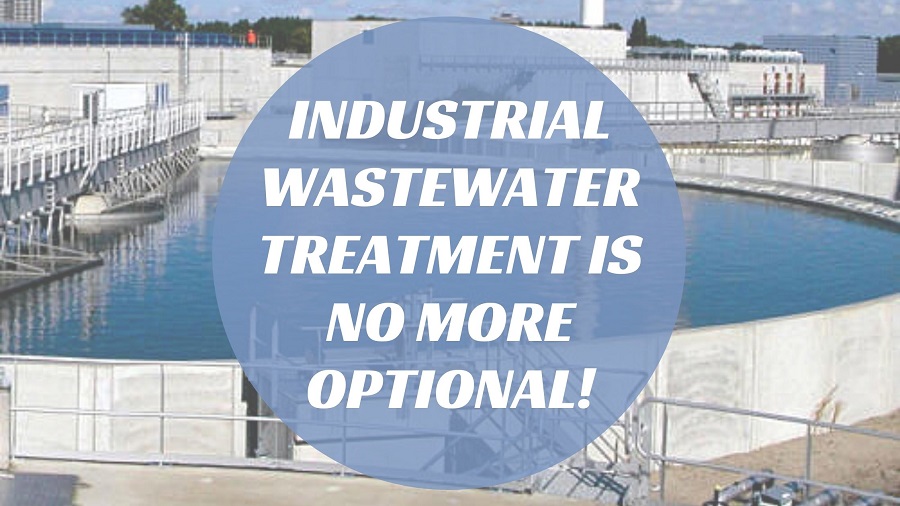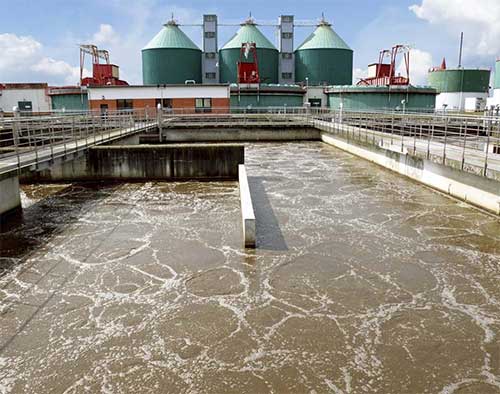Industrial Waste Water Treatment-- Eco-Friendly Solutions for Water Recycling
Industrial Waste Water Treatment-- Eco-Friendly Solutions for Water Recycling
Blog Article
Advancements and Developments in Hazardous Waste Water Therapy Technologies
The landscape of commercial wastewater therapy is undergoing a transformative change, driven by developments that improve both efficiency and sustainability. Emerging innovations, such as membrane layer bioreactors and microbial fuel cells, are redefining contaminant removal procedures while adding to power generation. Source recovery approaches are obtaining grip, straightening with round economic situation concepts. As regulatory criteria develop, the assimilation of AI and artificial intelligence right into wastewater management systems assures to improve procedures and make sure conformity. The full implications of these advancements elevate important inquiries about their scalability and long-term impact on industry practices.
Overview of Waste Water Treatment Technologies
Wastewater treatment modern technologies include a variety of approaches designed to remove impurities from commercial effluents before their release into the environment. These technologies are important for keeping environmental balance and guaranteeing compliance with ecological policies. The key groups of wastewater treatment include physical, chemical, and biological approaches, each offering unique objectives based upon the nature of the impurities present.

Organic therapy approaches utilize microbes to break down organic matter, making them specifically effective for organic-rich effluents. Techniques like turned on sludge and biofilm activators harness the all-natural degradation capabilities of germs, leading to substantial reductions in biochemical oxygen demand (BOD)
Advanced Filtration Methods
Advanced filtration techniques represent an essential development in the world of commercial wastewater treatment, boosting the performance of impurity removal processes. Industrial Waste Water Treatment. These approaches incorporate an array of technologies, including microfiltration, ultrafiltration, nanofiltration, and reverse osmosis, which offer consecutive barriers for different fragment sizes and chemical structures
Microfiltration and ultrafiltration utilize membrane systems to get rid of put on hold solids, bacteria, and larger natural particles, boosting the top quality of effluent before additional therapy. Nanofiltration connects the void in between ultrafiltration and reverse osmosis, efficiently eliminating natural compounds and divalent ions, therefore minimizing the lots on downstream processes.
Reverse osmosis provides the highest degree of purification by allowing just water and tiny particles to go through its semi-permeable membrane layers, making it excellent for reclaiming top notch water from commercial effluents. Current innovations in membrane innovation, including the advancement of more fouling-resistant and resilient materials, have dramatically improved operational efficiency and reduced prices.
Incorporating these sophisticated purification strategies not just boosts the overall treatment procedure however also adds to sustainability initiatives by allowing water reuse and source recuperation in commercial settings. (Industrial Waste Water Treatment)
Organic Therapy Innovations

Additionally, the development of crafted organic systems, such as membrane bioreactors (MBRs), integrates organic treatment with advanced membrane purification. This assimilation enables for greater effluent high quality and minimized footprint, making it suitable for space-constrained industrial centers. Innovations in genetically engineered microbes have actually also emerged, improving the biodegradation of details pollutants, such as drugs and hefty metals, that are generally testing to get rid of.
Furthermore, the implementation of bioaugmentation techniques, where valuable microorganisms are presented to boost the great site existing organic therapy procedures, has revealed promising lead to improving treatment efficiency. These developments collectively represent a fad in the direction of even more reliable and lasting biological therapy methodologies that can adjust to the advancing complexities of industrial wastewater streams. As sectors remain to focus on ecological conformity, these organic developments will play an essential role in wastewater monitoring.

Resource Recovery Approaches
In commercial setups, the integration of source healing techniques has come to be progressively important for enhancing sustainability and minimizing waste. These approaches focus on drawing out beneficial products and power from wastewater streams, thus transforming potential toxins right into recyclable sources.
One famous technique is vitamins and mineral recovery, where nitrogen and phosphorus, typically present in excess in wastewater, are captured and converted right into plant foods. This not only minimizes useful site ecological impacts but also supplies a circular economy option for farming applications. In addition, technologies such as anaerobic food digestion permit the conversion of natural waste into biogas, a renewable resource source that can balance out nonrenewable fuel source use in commercial procedures.
Furthermore, progressed purification and membrane innovations help with the recuperation of industrial byproducts such as salts and metals. These recovered products can be rehabilitated right into manufacturing procedures, minimizing the demand for virgin sources.
Future Fads in Waste Water Monitoring
As industries significantly focus on sustainability, the future of wastewater administration is readied to go through significant improvements. Technical innovations, such as expert system and equipment discovering, will certainly enable much more effective tracking and administration of wastewater systems. These modern technologies can anticipate upkeep needs, maximize treatment processes, and enhance decision-making, ultimately decreasing operational costs and environmental influence.
In addition, the combination of round economic climate concepts will certainly play a vital function in wastewater monitoring. Industries are anticipated to move in the direction of systems that not only treat wastewater yet also recover valuable sources, such as nutrients, water, and power. This change will minimize waste and advertise the reuse of materials, aligning with worldwide sustainability objectives.
Arising treatment strategies, such as membrane layer bioreactors and progressed oxidation processes, will better enhance the efficiency of wastewater treatment, enabling for greater top quality effluents suitable for reuse. Furthermore, regulative frameworks are likely to develop, stressing stricter criteria for wastewater discharge and motivating sectors to adopt ingenious therapy options.
Final Thought
In conclusion, the advancement of Get the facts industrial wastewater therapy innovations demonstrates a substantial change in the direction of enhanced performance and sustainability (Industrial Waste Water Treatment). Developments in innovative filtration techniques, biological therapies, and resource healing methods highlight the sector's commitment to ecological stewardship.
The landscape of industrial wastewater treatment is undergoing a transformative change, driven by developments that improve both effectiveness and sustainability.Wastewater treatment innovations incorporate a variety of methods created to get rid of contaminants from industrial effluents prior to their launch right into the atmosphere.Taking advantage of the power of organic procedures has led to substantial advancements in the therapy of commercial wastewater.Furthermore, the application of bioaugmentation methods, where advantageous germs are introduced to boost the existing organic therapy processes, has shown promising results in boosting treatment efficiency. These innovations jointly represent a pattern towards more sustainable and efficient organic therapy methods that can adapt to the developing intricacies of industrial wastewater streams.
Report this page